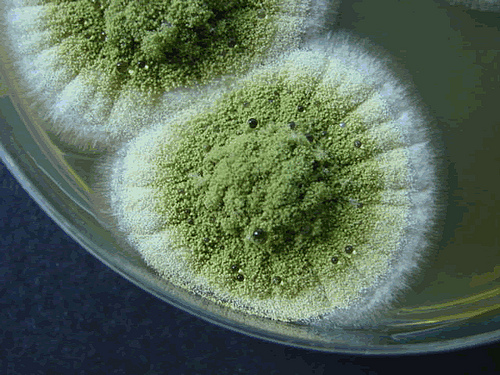A leading microbiologist, Professor Rosemary Barnes is personal chair of Cardiff University’s Institute of Infection & Immunity and  she has warned of the increasing threat that killer fungi poses to humans and the environment. She says, “For most people, fungal disease means a bit of athlete’s foot or a manky-looking toe nail. These maybe irritating and unsightly, but fungi can do far worse. Fungi kill more people than malaria and tuberculosis worldwide. They destroy about a third of all arable food crops. Some species have led to the extinction of many animal and plant species – sometimes even before the species has even been discovered.
she has warned of the increasing threat that killer fungi poses to humans and the environment. She says, “For most people, fungal disease means a bit of athlete’s foot or a manky-looking toe nail. These maybe irritating and unsightly, but fungi can do far worse. Fungi kill more people than malaria and tuberculosis worldwide. They destroy about a third of all arable food crops. Some species have led to the extinction of many animal and plant species – sometimes even before the species has even been discovered.
Prof Barnes goes onto say, “Fungi were on the earth long before plants and other life forms. They readily adapt to increasing globalization and climate change and we need to rise to the challenge to deal with the threats posed by these versatile and intriguing organisms.”
Pictured right - Colonies in a petri dish of the fungus Aspergillus flavus
What are The Most Lethal Fungi?
- Candida. Symptoms: skin and mucous infections, septicaemia. Death rate: 30-49%
- Cryptococcal disease, Symptoms: meningitis. Death rate: 70% in the developing world
- Aspergillosis. Symptoms: Cavitating lung disease, Death rate: 50-90% in the immunocompromised
- Histoplasmosis, Symptoms: lung disease. Death rate: 30% in chronic disease
- Pneumocystis. Symptoms: pneumonia. Death rate: 15-20%
The latest figures show that fungal diseases cause hundreds of thousands of deaths annually, following severe respiratory illness and infections of the blood stream. The scientists have identified more than two million species of fungi and they are considered to be among the most diverse and adaptable of all living organisms, predating humans by hundreds of millions of years.
One in Three People Infected
Only 600 species are known to cause disease and 99% of these diseases can be attributed to 30 kinds of fungi. Whilst relatively few species cause human disease, they are incredibly common with approximately one-in-three people infected.
Most infections are trivial but serious invasive diseases affect 2.5 million people worldwide. Invasive fungal disease is very difficult to treat and can be distressing for patients, causing gross disfigurement. Other strains of fungi can decimate crops leading to billions of pounds of food wastage and contribute to global poverty.
Recent flooding across UK and the rest of Europe has exacerbated the situation further. Prof Barnes reported:“Flooding caused by adverse weather conditions has caused a worsening situation of home dampness and indoor mould growth, which are associated with asthma, rhinitis and other respiratory problems. Five and a half million people in the UK alone are living with asthma and half of these cases are down to an allergic reaction to fungi.”
Emerging fungal diseases such as Dutch Elm, ash dieback, sweet chestnut blight and sudden oak death are also a real concern for Britain’s forests, She continued:“Deforestation from fungal pathogens increases carbon dioxide emissions and contributes to global warming. Other diseases attack insect populations that are crucial for plant pollination. For example, microsporidial fungal infection contributes to colony collapse disorder that has brought a massive decline in domestic bee populations – crop yields are decreased by as much as a third when bee pollinations are affected.
Prof Barnes says that the real impact of fungus on our health, environment and economy is largely unknown because we need better diagnostic methods and there is inadequate research investment in this area.
Useful links:
The Global Action Fund for Fungal Infections
Leading International Fungal Education
Click here for images of fungi
A bacterium, virus, or other microorganism that can cause disease.
Full medical glossary









